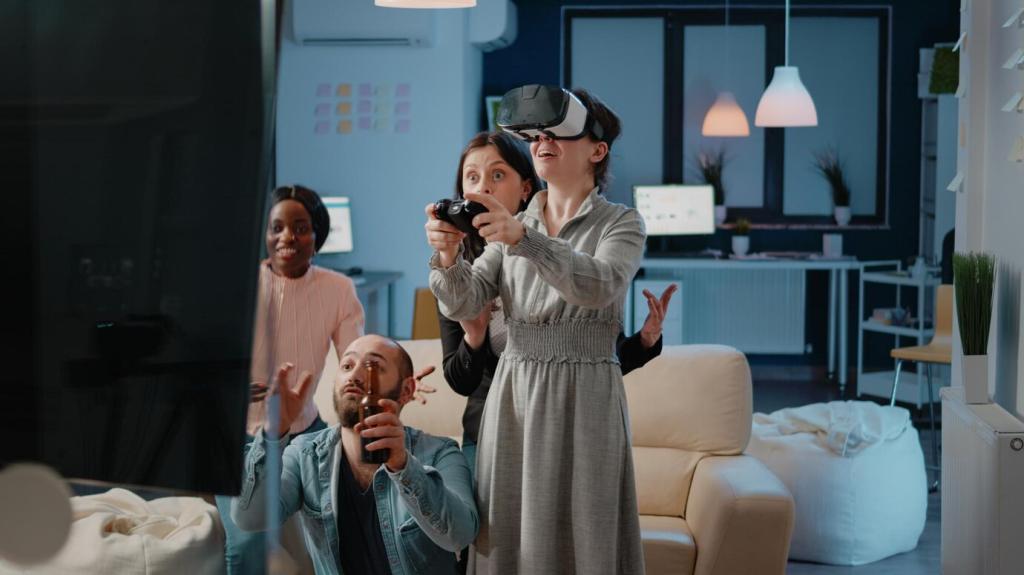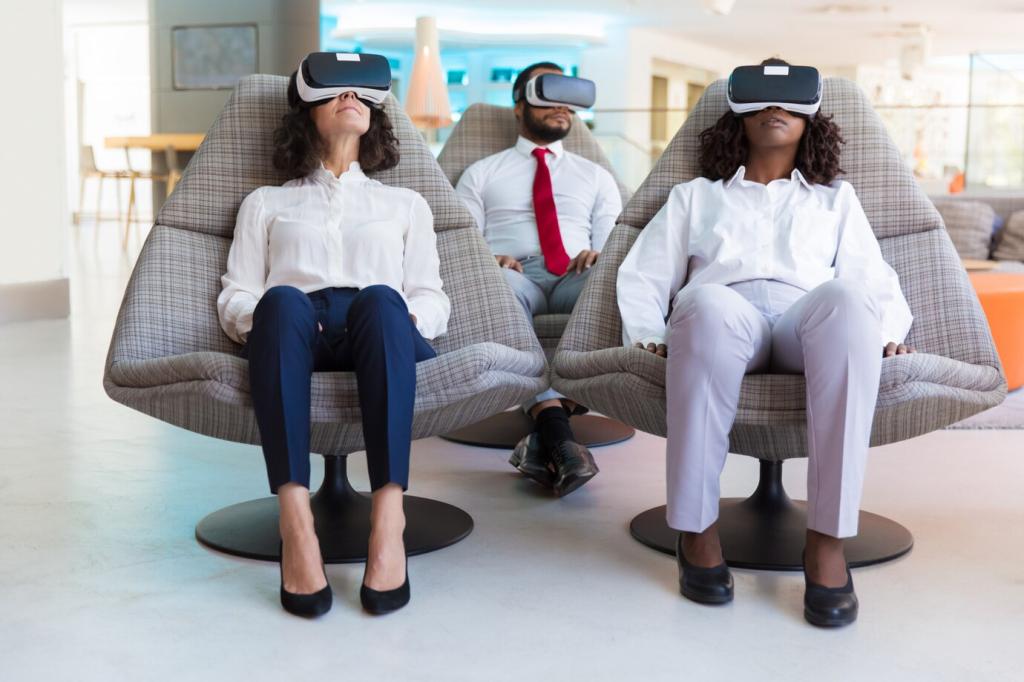
Smart Home Innovations: What's Next?
The future of smart homes is evolving at a rapid pace, blending convenience, connectivity, and intelligence like never before. As homes become more interconnected, the latest innovations are shaping how we live, work, and interact with our environments. From artificial intelligence-powered systems to sustainable solutions and seamless integrations, the next wave of smart home technology promises to be even more transformative. Explore the upcoming trends, groundbreaking technologies, and exciting possibilities that will redefine domestic life in the coming years.
Adaptive Home Automation
Adaptive home automation utilizes AI algorithms to learn daily routines and adjust systems like lighting, heating, and security accordingly. Over time, the system recognizes patterns in inhabitants’ schedules and preferences, creating a personalized environment without manual programming. For example, a smart thermostat may adjust its settings preemptively before occupants arrive home, ensuring ideal comfort. Such intelligence not only enhances convenience but also optimizes energy consumption, seamlessly aligning technology with daily life and setting a new standard in residential comfort.
AI-Powered Voice Assistants
Voice assistants have advanced beyond basic commands, evolving into sophisticated AI-powered conversational partners. The latest innovations allow these assistants to interpret contextual cues, understand nuanced requests, and collaborate with a wider array of smart devices. They can now manage complex tasks—such as orchestrating multi-step routines or responding to mood-based instructions—with natural, human-like dialogue. Continued improvement in natural language processing means voice assistants will soon anticipate needs, offering proactive solutions to everyday challenges through seamless integration in the smart home ecosystem.
Predictive Maintenance and Care
Smart home systems are leveraging AI for predictive maintenance, automatically identifying potential issues before they escalate. Intelligent sensors monitor appliance health, detecting anomalies such as declining efficiency or unusual vibrations. When irregularities are detected, homeowners receive timely alerts, including possible causes and suggested remedies. This proactive approach reduces downtime, extends the lifespan of expensive devices, and minimizes repair costs. As predictive capabilities become more nuanced, households will benefit from unparalleled reliability and peace of mind.
Seamless Device Interoperability
Universal Standards and Protocols
Industry-wide adoption of universal standards such as Matter is becoming a game-changer. These protocols enable devices from different manufacturers to work together harmoniously, simplifying both installation and everyday use. Gone are the days of compatibility frustrations—future-forward homes can combine lights, locks, cameras, and more into a single coordinated system. Universal protocols assure homeowners that new investments will integrate smoothly, future-proofing their smart home environments and driving wider adoption of smart technology.
Unified Control Experiences
The proliferation of devices once led to fragmented control systems, each with its own app or interface. Modern innovations focus on centralized control hubs and intuitive interfaces that bring all functions under a single digital roof. Whether through a dedicated touchscreen, smartphone app, or voice assistant, users enjoy quick, straightforward access to every feature. This level of unification drives satisfaction, allowing occupants to focus on the benefits of automation rather than wrangling with confusing controls.
Dynamic Device Discovery
Dynamic device discovery is revolutionizing how homes are set up and expanded. Instead of manual configuration, smart homes now automatically detect and securely add new devices as soon as they are powered on. This plug-and-play approach reduces technical barriers, enabling anyone to personalize and expand their system without extensive expertise. Dynamic discovery also ensures new components are optimized to work collaboratively, further strengthening the smart home’s interconnected foundation.

Advanced Security and Privacy
Biometric authentication is quickly becoming the gold standard for smart home access. Innovations like facial recognition, fingerprint scanning, and even voiceprint analysis are securing entry points and sensitive areas within homes. Such measures are exponentially harder to bypass compared to traditional security codes. These systems adapt to changes in appearance and environmental conditions, providing strong, reliable, yet convenient security. The shift to biometric techniques redefines safety, offering peace of mind in an increasingly connected era.

Energy Efficiency and Sustainability
Smart energy management platforms enable homes to monitor and optimize electricity usage in real time. These systems analyze consumption patterns, dynamically adjusting the operation of devices to align with the best utility rates or renewable sources. For example, a smart dishwasher may schedule cycles when solar panels are at peak production. Such platforms not only lower bills but also promote conscious energy use. By harnessing granular data, homeowners actively contribute to a greener planet—all without sacrificing comfort or convenience.

Immersive Home Entertainment

Emerging smart home systems are capable of transforming any room into a dynamic audio-visual landscape. Advanced lighting, acoustics, and display technologies respond to content choice and user mood, automatically adjusting to create perfect viewing or listening conditions. For example, cinema mode may dim lights, close blinds, and fine-tune speakers for optimal performance. Seamless integration means entertainment follows users from room to room, delivering consistent, tailored experiences that elevate movie nights, game sessions, and more.
Health and Wellbeing Integration
01
Intelligent Sleep Optimization
Smart homes are now capable of orchestrating the perfect sleep environment using sensors, lighting, temperature controls, and smart beds. These systems monitor sleep patterns and optimize nighttime routines by adjusting ambient conditions—cooling the room, dimming lights, and playing soothing sounds. Over time, sleep optimization platforms analyze patterns to provide actionable insights, helping inhabitants enjoy more restorative rest. Better sleep translates directly into improved wellbeing, energy, and productivity, making it a cornerstone of the healthy smart home.
02
Wellness Monitoring and Alerts
Continuous wellness monitoring is being seamlessly woven into smart home infrastructure. Sensors track markers such as air quality, humidity, motion, and even biometrics, alerting users to potentially harmful conditions or abnormal patterns like prolonged inactivity. If someone experiences a fall or unusual behavior, systems can automatically notify caregivers or trigger emergency responses. The result is an environment that actively looks out for its occupants’ health and safety, fostering independence and peace of mind, especially for the elderly or those with health challenges.
03
Stress Reduction and Mindfulness Tools
Smart home systems are increasingly aware of their inhabitants’ mental states, responding proactively to cues of stress or anxiety. Features may include automated lighting adjustments to promote calm, personalized guided meditation sessions, or ambient soundscapes designed to ease tension. Some systems even monitor heart rate or voice tone, intervening with relaxing environments or recommending breath exercises as needed. By integrating these subtle yet powerful supports, the smart home becomes a true ally in everyday mental wellness.
Wi-Fi 7 and Beyond
Wireless networks are advancing rapidly, and technologies like Wi-Fi 7 promise unprecedented speeds and capacity. These improvements reduce lag, support more devices simultaneously, and provide expanded coverage—even in larger or busier households. By minimizing connectivity bottlenecks, smart homes can support bandwidth-intensive applications like 8K streaming, VR, and real-time video analytics without interruption. Enhanced security and energy efficiency come as added bonuses, future-proofing homes for the next generation of intelligent devices.
Edge Computing Integration
Edge computing is moving critical processing directly into the home, reducing reliance on distant cloud servers. By processing data locally—whether for security cameras, health monitors, or automation systems—homes gain faster responses and improved privacy. This shift not only ensures reliability during internet outages but also supports advanced AI routines and comprehensive automation. As edge computing becomes standard, smart homes will be more autonomous, resilient, and able to offer truly real-time experiences.
Personalized Experiences and Customization
Context-Aware Environments
Context-aware systems use sensors and AI to understand not just who is home, but what they are doing and how they feel. Smart homes adjust temperature, lighting, and even playlist choices in real time, personalized for the specific activity—be it work, exercise, or family time. Residents are greeted by different moods as they enter different spaces, enhancing comfort and emotional wellbeing. This responsiveness ensures that the home is always in sync with its occupants’ needs, delivering relevance and delight in every moment.
Routine Automation and Scheduling
Routine automation platforms are empowering users to craft intricate schedules and behaviors for their homes. Whether it’s a custom “morning routine” that slowly wakes the house, or an “away mode” that simulates presence for security, these tools offer granular control over every device. Over time, automation adapts to changing lifestyles, learning from minor adjustments and personal preferences. The ability to automate almost any aspect of daily life frees up time and mental space, streamlining chores and ensuring comfort with minimal effort.
User Profiles and Multi-Occupant Recognition
The future smart home recognizes each resident individually, creating custom profiles that store and enact their specific preferences. From preferred room temperatures to personalized media playlists and security permissions, the system adjusts automatically as different people move through the house. Advanced systems even identify guests and adapt interactions accordingly. This multi-occupant intelligence supports harmonious living, ensuring everyone feels at home and reducing friction between technology and human behavior.
